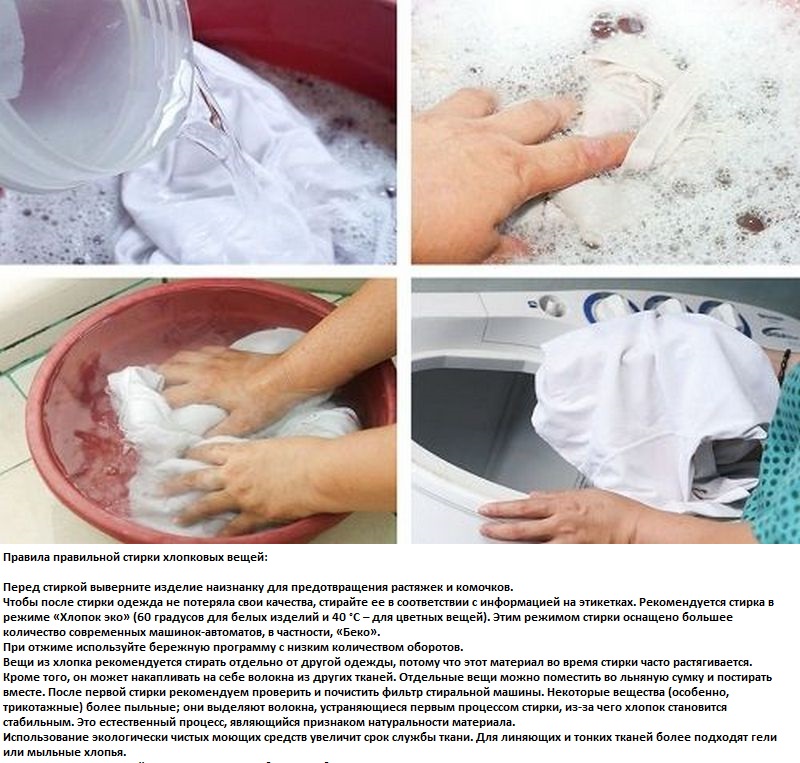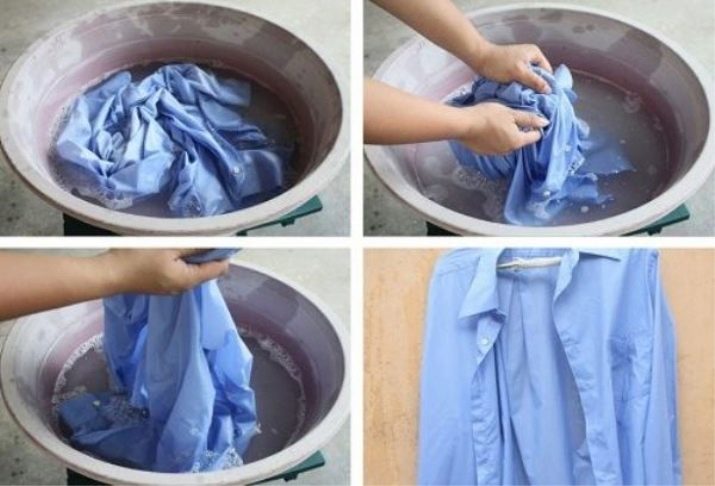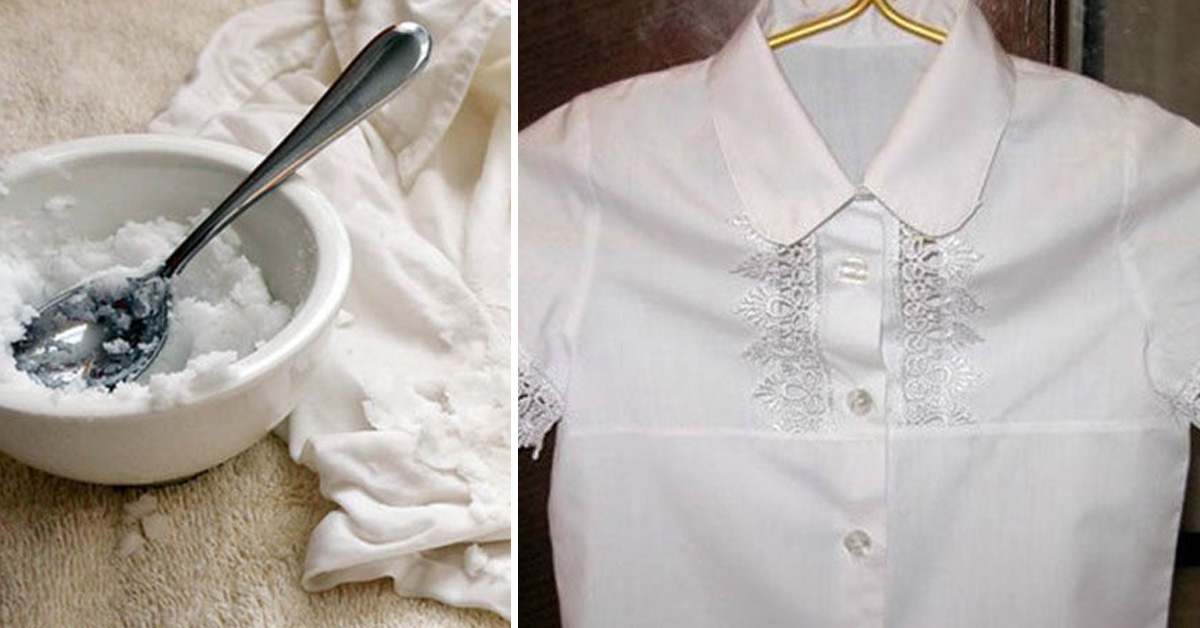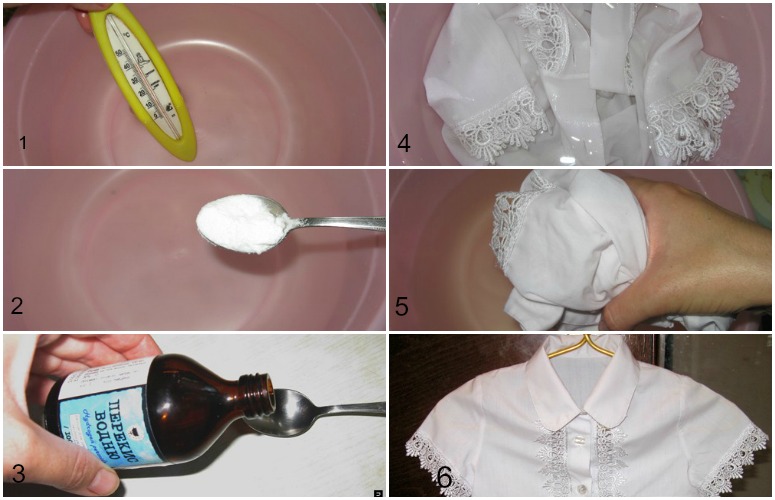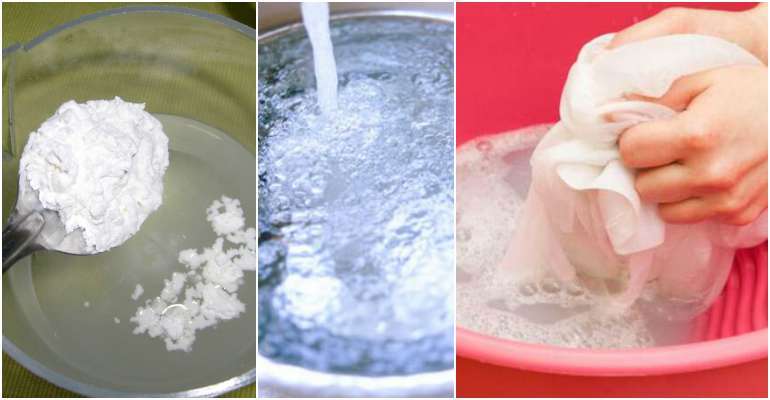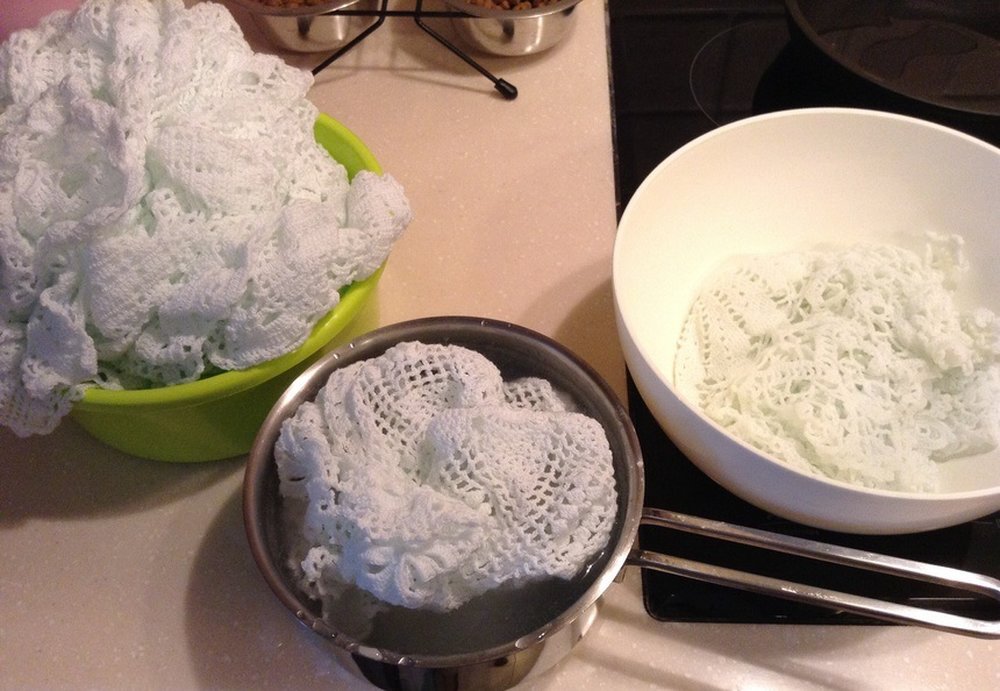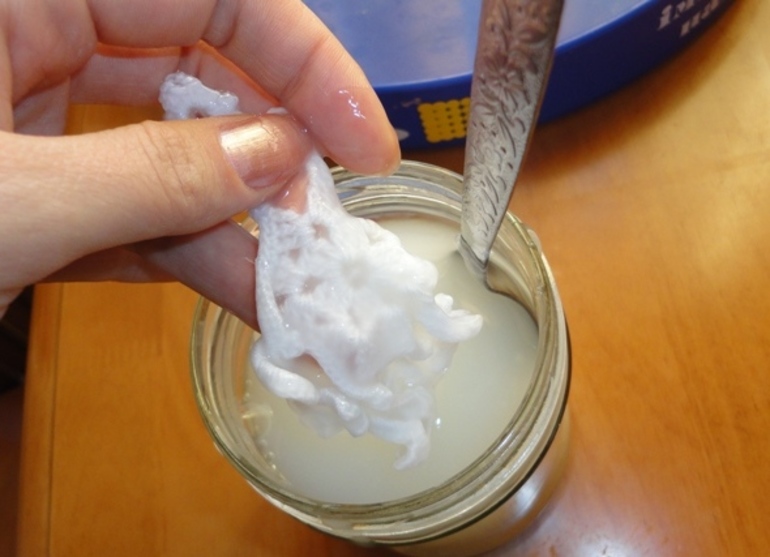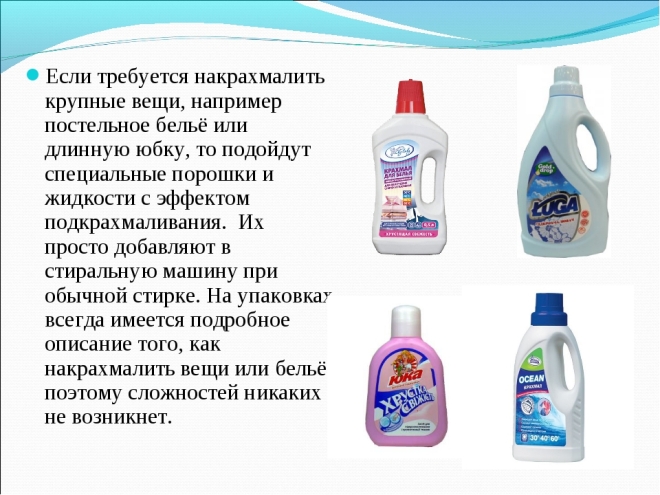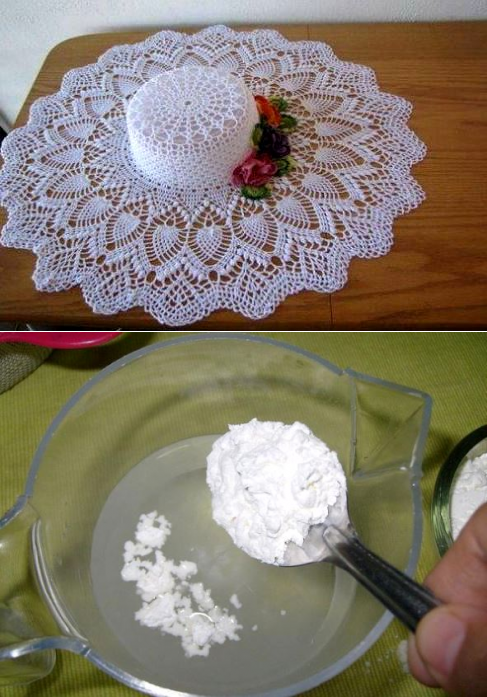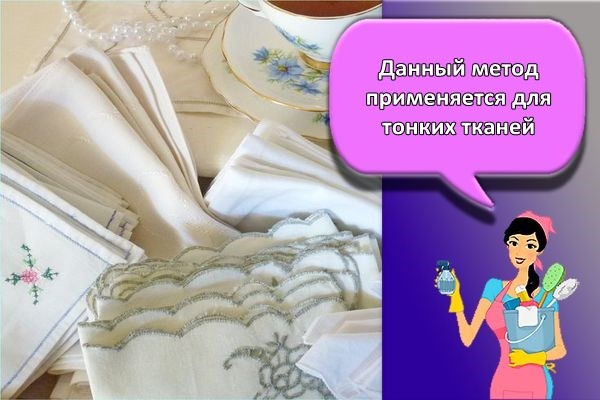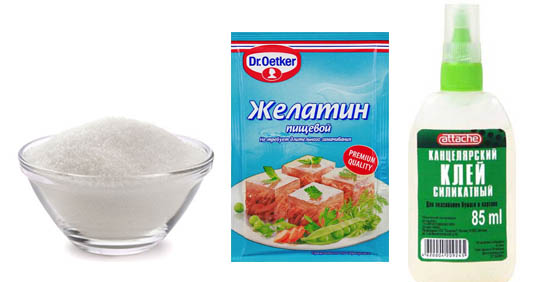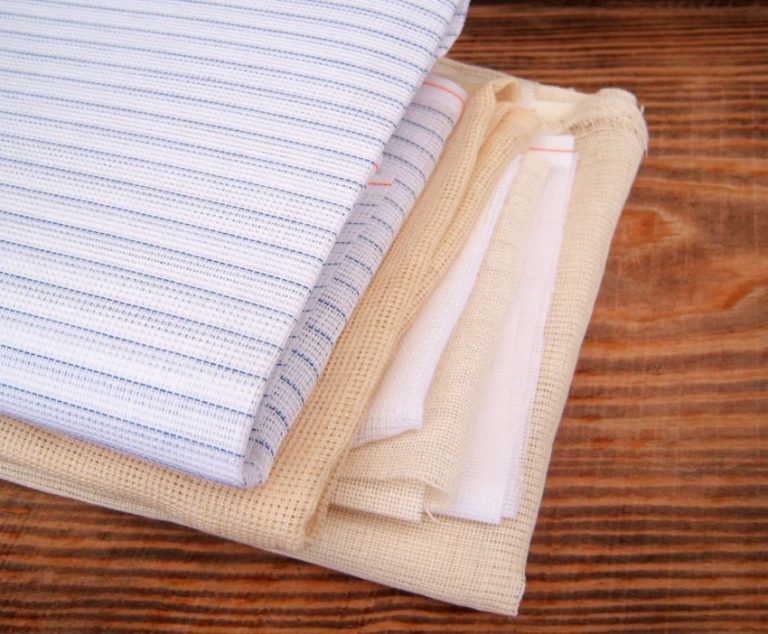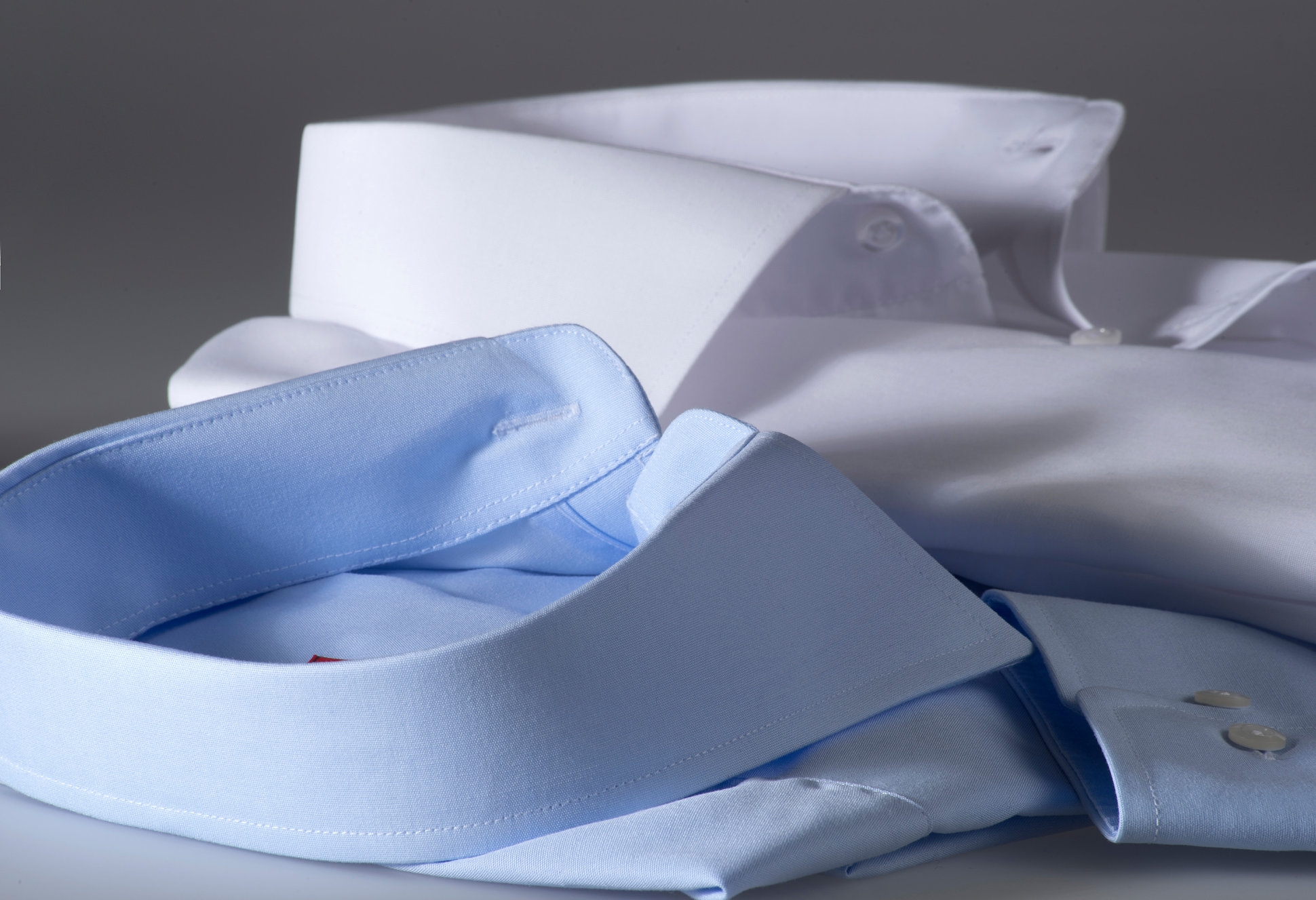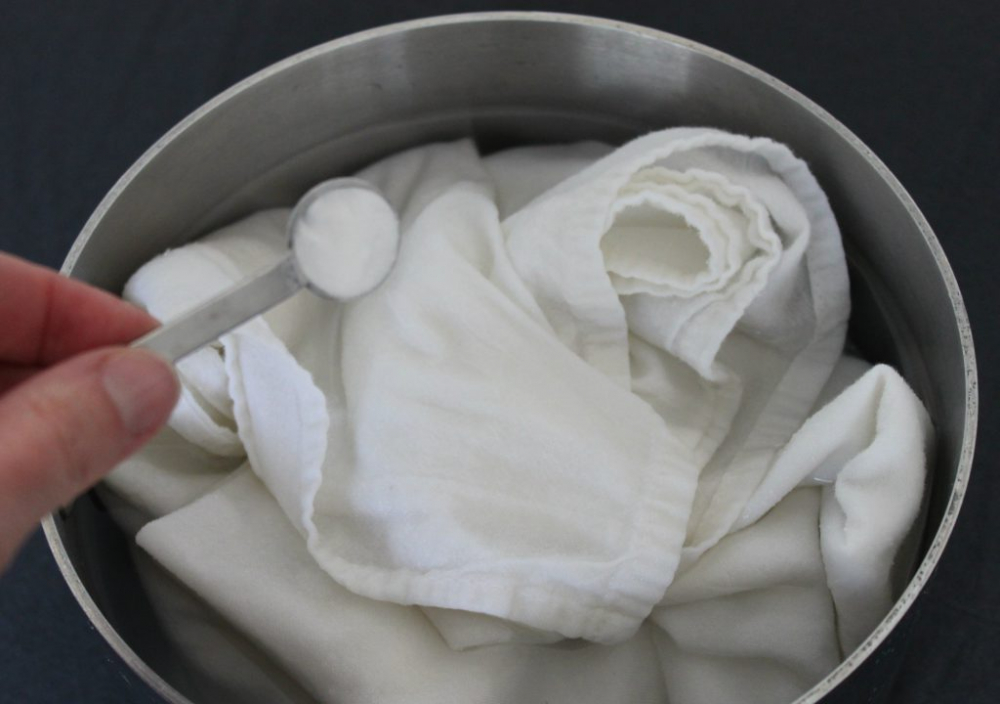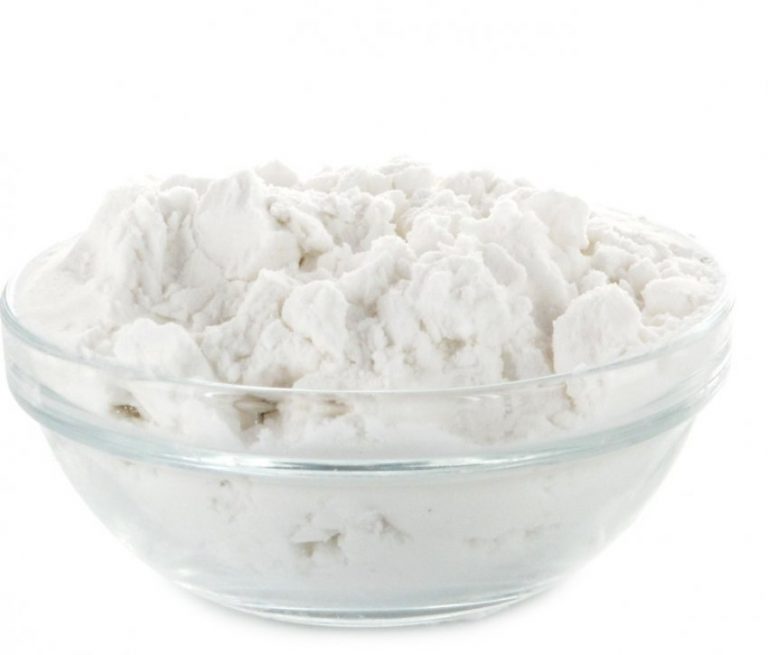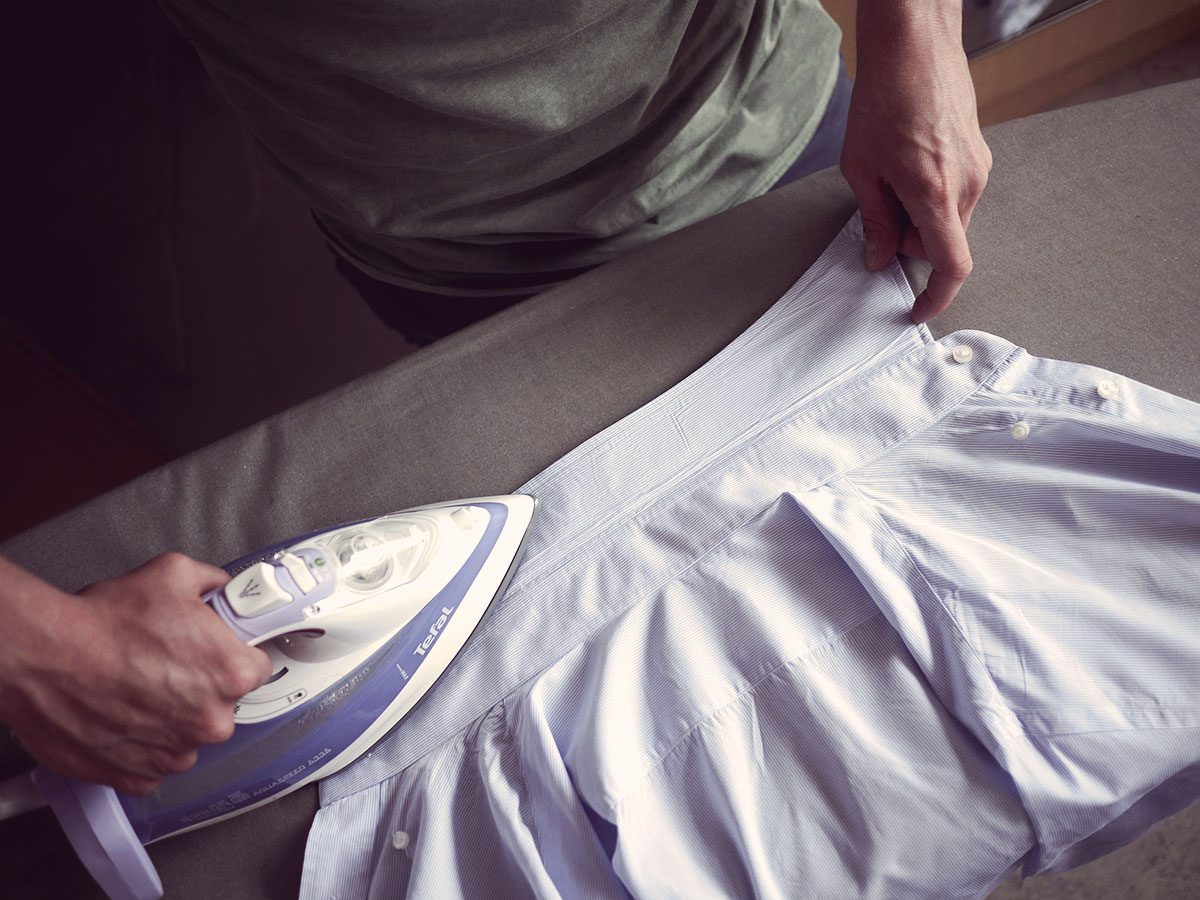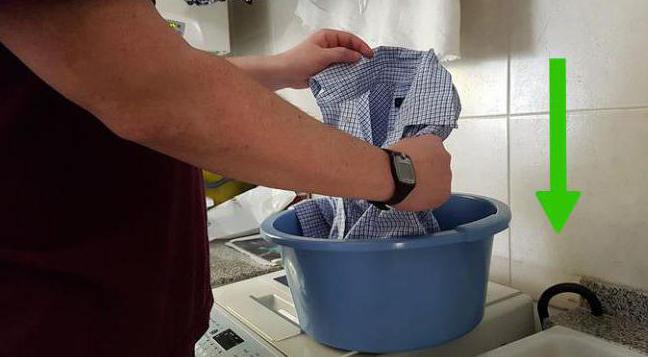Basic ways
When figuring out how to starch a fabric with starch, you should know that the essence of the process is to soak textiles in a solution of plant materials and water. You can use a processed product of potatoes, corn, rice or wheat. The most commonly used potato starch. It is inexpensive, gives things a bright white color and thickens well.
Before starching, the fabric should be washed and rinsed thoroughly. It can be wet or completely dry before dipping into the solution. Depending on the concentration of the mixture, three processing methods are distinguished:
- Soft. Allows you to give the product elasticity, but does not make it hard to the touch. Suitable for bed linen, blouses, chiffon, batiste, silk dresses.
- Average. Provides the opportunity to create a certain shape and refresh textiles. It is used for tablecloths, napkins, men's shirts, furniture covers, curtains, lace, flounces.
- Hard. It is necessary if the question arises of how you can starch the fabric so that it stands. Used for petticoats in lush dresses, cuffs, collars, decorative textile flowers.
In addition, the starching effect can be obtained without the use of starch. For these purposes, gelatin, sugar and glue are used.
Soft way for bed linen and tulle
Solving the problem of how to starch the laundry, let us consider in detail a soft method of processing. The solution is prepared at the rate of 1 teaspoon of starch and 1 liter of water.
Stages:
- Pour starch into a small container and pour 150-200 ml of cold water. Stir thoroughly so that there are no lumps.
- Boil the rest of the water. Pour in the concentrated starch solution with constant stirring. Turn off the fire.
- Cool the liquid to room temperature. It should be transparent and leave a slippery mark on the skin if you put your hand into it.
- Pour the starch solution into a basin and immerse the bedding in it for 1-2 minutes to soak it.
- Take out the fabric, wring it out and shake it off. Hang to dry. If possible, remove all creases and folds.
In addition, a mild solution can be used if there is a problem, how to starch the tulle or curtains to make them look more elegant. Read how to bleach tulle in a separate article.
Stages:
- Combine starch with water according to the scheme described above.
- In the chilled solution, lower the tulle for 30 minutes.
- Pull out the fabric. Squeeze out the liquid.
- Iron the tulle when it dries a little, but is still damp.
Medium for laces, napkins, shirts, school aprons
A medium-hard starch solution is made from 1 liter of water and 1 tablespoon of raw materials. The process of preparing the mixture is similar to the previous method. The result is a translucent homogeneous liquid "jelly". If the solution is too thick, add a little warm water to it and stir thoroughly.
The further algorithm of actions depends on the type of tissue. It is enough to dip tulle and other thin materials in starchy liquid for a few seconds, lace and openwork napkins - for 20 minutes, tablecloths, table napkins and shirts - for 10-15 minutes.
If you need to starch a separate piece of clothing (shuttlecock, lace), you can prepare a solution and grease the decor with it with a piece of cloth or a sponge. After 10-15 minutes, the treated fragment should be covered with gauze and ironed with a warm iron.
Hard way for gauze, collars, cuffs
Let's figure out how to starch the fabric strongly at home so that it keeps its shape well. The solution can be prepared according to the previously described algorithm from 1 liter of water and 2 tablespoons of starch, or you can use another recipe.
Components:
- 1 liter of water;
- 50 g starch;
- 1 teaspoon of borax, or sodium boric salt, available over the counter.
Preparation of a solution for hard starch:
- Dissolve the starch in a glass of cold water.
- Dissolve borax in a glass of hot water. Cool to room temperature.
- Boil the remaining water. Stir constantly, pour the starch into it.
- Add borax solution to the starchy "jelly". Wait 2 hours.
Consider how to starch gauze, if a petticoat is made of it, and you need it to add splendor to the dress:
- Dip the product into a starch solution.
- Once the fabric is completely saturated, remove it, wring it out and allow it to dry slightly.
- Iron the cheesecloth, straightening the wrinkles, while wet.
To starch the cuffs and shirt collar, only these elements need to be dipped into the solution. After 20 minutes, they should be removed, squeezed, dried and ironed thoroughly.
Instructions
The general procedure for starching is as follows:
- a composition is selected that is suitable for a specific material;
- a solution is being prepared;
- the shirt is placed in the mixture for half an hour (more or less);
- clothes are straightened and hung out to dry;
- during the drying process, the jacket should be periodically sprayed with water from a spray bottle;
- after drying, the clothes are re-treated with water from a spray bottle, and then ironed.
It is recommended to iron the cuffs and collars several times. After completing the steps described, you can put on the shirt.
This is due to the fact that tissues react differently to this effect. Before the procedure, it is recommended to wash and dry the materials. Also, sometimes things are starch in the washing machine. Bed linen is usually treated with this method, since the substance penetrates unevenly into the structure of the fabric.
Collar and cuffs
Starch individual parts of the shirt if necessary. Most often, this procedure is carried out on collars and cuffs. Moreover, these parts are starch, according to the algorithm given earlier. The hard solution described below is suitable for this option. The collar and cuffs should be alternately lowered into the prepared mixture 3-4 times. After that, the shirt must be hung out to dry, periodically spraying the treated parts with water.

Also, for this option, a solution is sometimes used, obtained from 30-50 grams of potato or corn starch and one liter of water. The mixture must be infused for two minutes. After that, 20 grams of coarse salt should be diluted in a separate glass with water. Then each solution must be mixed with each other and left to infuse for 2 hours.
After preparation, the cuffs and collar should be placed in the composition alternately. Further, the water should drain off on its own, so the clothes are not wrung out. Without waiting for complete drying, the cuffs and collar are ironed.
Knitted product
There are two methods for starching knitted products: "hot" and "cold". According to the first option, you must perform the following actions:
- A solution is prepared from a glass of water and three tablespoons of starch. Such a strong concentration is necessary because in this case, a rigid fixation of the collar is required.
- Bring 750 milliliters of water to a boil. After that, a starch solution is gradually introduced into the liquid (in a thin stream).
- This mixture is cooked until a thick paste forms.
- When the temperature of the paste drops to comfortable values, the knitted product is lowered into the mixture.
- Clothes in this composition are aged for 5 minutes, wrung out and dried.
Also, the following algorithm is used for starching knitted products:
- 200 milliliters of cold milk is mixed with a tablespoon of rice starch.
- 800 milliliters of milk is brought to a boil. Then a starch solution is introduced into this mixture in a thin stream.
- After cooling, a knitted product is placed in the mixture for 20 minutes.

According to the "cold" method, starching is carried out as follows:
- In 500 milliliters of water, 1.5 tablespoons of starch are dissolved.
- The composition is applied with a brush to the knitted product.
- After the material has been impregnated, the item is left to dry.
It is advisable to check that each thread is secured in the correct position prior to processing the knitted garment.
Modern means
 The modern rhythm of life dictates its own conditions, therefore, housewives often refuse starching due to the extremely large expenditure of time and effort on this process. However, there is an alternative. Technological progress has made it possible to create more convenient ways to achieve a similar result. On sale you can find special liquids for starch, some of them are available in the form of aerosols. The main use for these products is to spray the fabric during ironing. This method is most convenient for processing small areas of fabric.
The modern rhythm of life dictates its own conditions, therefore, housewives often refuse starching due to the extremely large expenditure of time and effort on this process. However, there is an alternative. Technological progress has made it possible to create more convenient ways to achieve a similar result. On sale you can find special liquids for starch, some of them are available in the form of aerosols. The main use for these products is to spray the fabric during ironing. This method is most convenient for processing small areas of fabric.
There are advanced tools for big things too. These include specialized powders or liquids that have a starching effect. As a rule, it is sufficient to simply add them during the wash along with the detergent.
Some housewives add starch solution to the softener compartment in the washing machine, it is important to choose the right concentration. Do not use fabric softener and starch at the same time.
After using this method, thoroughly clean all surfaces of the washing machine that come into contact with starch.
All modern tools are supplied with instructions for use, so they are not difficult to use.
Despite the fact that the habit of starching fabrics has lost its former popularity, there are still many adherents to maintaining the ideal appearance of things, so the use of starch will remain relevant.
Traditional methods
Potato starch is most often used to give elasticity to the fabric. It brews easily and thickens well. You can also starch items with rice, corn, or wheat starch.
It is necessary to purchase a snow-white potato starch with a barely distinguishable light blue tint. A gray product should not be used as it may impart an undesirable tint to white fabrics.

We recommend that you familiarize yourself
Before starching, the laundry is washed and thoroughly rinsed by hand. There should not be a single speck on the fabric. Even minor defects are perfectly visible on the starched material.
The stiffness of the fabric is achieved with a starch solution. The ratio of powdery substance to water determines the degree of elasticity of the material. The amount of solution depends on the size of the product. The whole thing should be immersed in the solution.
The rinsed laundry is dipped in the prepared solution and left in it until the material is completely saturated with liquid. The denser the fabric, the longer it needs to be kept in the starch.
The processed item is hung out to dry.
The fabric is dried until it becomes slightly damp. After that, they start ironing the linen. The iron should not be too hot. High temperatures can cause yellowing of the starch.
The material must not be allowed to dry completely. In this case, it will not be possible to give it the desired shape and ideal smoothness.
The fabric should be dry during ironing. If the material remains wet after it, it will lose its shape.

Types of starch
Depending on the type of garment and the fabric from which it is made, one of the following types of starching is applied:
- soft;
- the average;
- tough.
Let's take a closer look at each of the types.
Soft
It is used for thin and extra light fabrics. The amount of starch required is extremely small: use one teaspoon of dry starch per liter of water.Summer light knitted dresses and blouses are recommended to softly starch.
The average
The main application of medium intensity starch is the treatment of bed linen, tablecloths and napkins. Shirts, blouses and skirts are also starch of this type. To achieve an average concentration of the solution, use a tablespoon of starch per liter of water.
Hard
Rigid starching is used to process a fairly narrow list of things, it includes, first of all, collars and cuffs of shirts. Less common options include starching the ball gown petticoat to keep it in shape. Two tablespoons of starch are used per liter of water.
Some housewives advise adding borax to the solution, which is a boric acid salt, to enhance the effect. It is necessary to dissolve three teaspoons of borax in a glass of hot water, then cool the resulting solution and mix it with a starch solution. Borax is currently available at the pharmacy.
If you have to starch the garments harshly, it is recommended to straighten the folds with an iron through the padded white fabric using strong pressure to improve smoothing.
Useful Tips

In order for the fabric to look impeccable, you need to know not only how to starch it correctly, but also how to care for it after the procedure. Thin laces that do not require washing, just soak with a sponge soaked in starch solution and do not soak completely. Cover with gauze and iron. This method is also suitable for tulle products.
The procedure for starching shirts at home requires special attention. It can only be used on natural fabrics. The peculiarity of the weaving of the fibers allows the starch solution to penetrate inside and make the product denser. The main part of the shirt should be medium cut and the collar should be tough. First, the whole thing is starch in a medium solution, then a thick solution of starch is prepared for the collar, with which it is processed.
To stiffen a hat with a wide brim, a hard method of starching is suitable. You can dry the hat by putting it on the jar. But be sure to put a flat surface under the fields. You can also dry the chef's hood in this way.
A few more tricks:
- in order to avoid sticking of starched clothes to the iron, you can add a couple of drops of turpentine to the starch;
- adding salt to the solution will give the fabric more shine;
- you cannot dry starched products in the frost, as well as in the open sun;
- to dry lace and openwork napkins in a horizontal position, and shirts, dresses vertically on a hanger;
- the drying room must be well ventilated;
- it is better to iron things slightly damp, without using steam;
- if there are colored embroideries on the products after starching, they must be ironed from the inside out with a warm iron.
Today it is no longer relevant to starch everything, as it was before. But there are times when this procedure is simply necessary for some things. Thanks to starching, you can give them a flawless and neat appearance, the desired shape. You can also starch the fabric at home, using the method that is more suitable in this or that case.
A starched tablecloth on the table will add a festive mood, and a starched cambric blouse will be less wrinkled and dirty. Tablecloths, linen napkins, furniture covers, tulle, and sometimes collars and cuffs of blouses will not do without starch. Video on how to properly starch fabric:
Useful Tips for Starching Your Shirts at Home
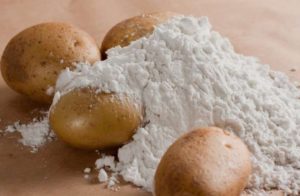 The main tips that will greatly facilitate the workflow, while not reducing the effectiveness of the result:
The main tips that will greatly facilitate the workflow, while not reducing the effectiveness of the result:
- You can use the washing machine to starch several items at the same time.To do this, pour the starch solution into the compartment for the conditioner, without adding any cleaning agents. Then set the wash program and, at the end, draw out the items.
- For a glossy shade, melted stearin can be added to the starch.
- Cooking salt mixed with the solution will give the fabric a shine.
- Do not dry your laundry after starching in the cold, as it will be difficult to smooth it out.
The process of processing shirts is not in demand among the population today, but the end result of conventional starching of things exceeds all expectations, leaving behind the modern methods that are used in dry cleaners.
When putting clothes in order, housewives less and less often remember about such a simple but proven remedy as starch, and it is completely in vain. It gives the fabric a firmness and a pleasant "fresh" crunch. Starched clothes and underwear keep their shape perfectly, wrinkle less, and lace and openwork fabrics are smoothed out. Starch prevents dirt from penetrating into the fibers of the fabric, and therefore starched products are easier to wash.
Corn, rice, and wheat starch are available in stores, but potato starch has proven to be the best. Unlike its "brothers", potato starch thickens faster, and its bright white color casts an unobtrusive blue.
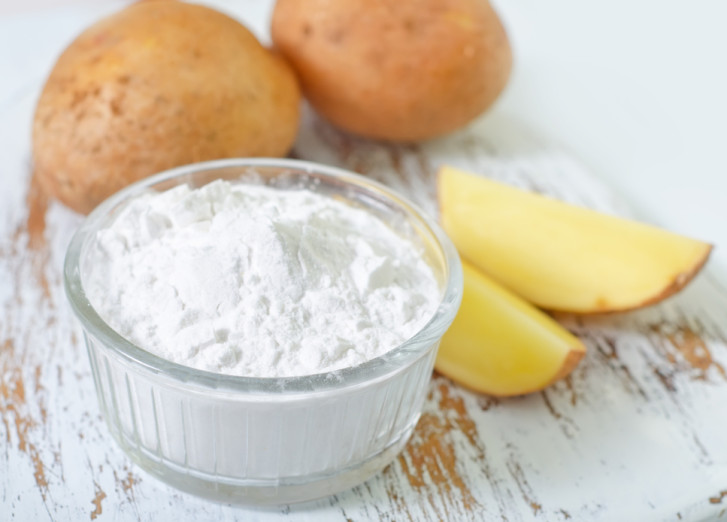
General rules for starching:
- The item must be clean, freshly washed. Yellowness and greasy stains will be especially pronounced on starched clothes.
- Do not starch your underwear (it will begin to poorly let air through, which is unhygienic), as well as dark clothes - whitish stains remain on them.
- Stir the starch in the water thoroughly so that there are no lumps. If the solution is not homogeneous, pass it through several layers of gauze.
- Dirty starch, with a grayish tint, let stand in cold water (10-20 minutes), then drain.
- Do not allow moisture to get on already starched items.
Composition recipes
Usually, starch is understood as a substance obtained from potatoes. However, a powder isolated from rice and corn is suitable for the treatment of shirts. The effect of each type of starch is the same.
Potato
This type of starch is considered the most readily available and widespread. This base is used for processing various materials. At the same time, to improve the appearance of the shirt, it is recommended to add a small amount of salt to the potato starch.
Rice
Rice starch is more expensive than potato starch. And the effect of the influence of both substances, as well as the recipe for the preparation of a mixture intended for processing shirt collars, are the same.
Corn
Cornstarch is rarely used for processing clothes. This is due to the fact that this substance is not used on dark shirts. After such a procedure, stains appear on such products.

5 How things from different fabrics starch
Cotton and linen products are usually starchy. For each type of fabric, you need to find your own individual approach. There are separate tips for handling each type of matter.
 Starched tulle skirt
Starched tulle skirt
Silk. To make gliding silk stiff, it can be starchy with silicate glue or gelatin. As a result of this processing, a silk product acquires elasticity and a special gloss:
- Silk clothing should be washed and stains removed, if any.
- Now you can prepare the solution taking into account the proportions: 1 teaspoon of glue for 5 liters of water.
- The next step is to put a blouse in the resulting mixture, after which you can leave it to soak.
- Then a light spin is used.
- It is better to dry the thing on a hanger, with straightened folds.
- Finally, ironing must be done through a special gauze.
 Silk wipes after starch aging
Silk wipes after starch aging
Fatin. This fabric is widely used for wedding and dance dresses, ballet tutus, decor items.
It is recommended to starch it in a weak or medium saturated solution.
Basic principles:
- Place the product in the solution and at the same time stir thoroughly so that there are no areas left on which the composition has not fallen.
- After taking the product out of the composition, it is necessary to smooth out the irregularities on it and let it dry.
- It is necessary to iron the fabric while damp, straightening the unevenness.
 Starched gauze
Starched gauze
Gauze. The basis for dancing outfits is most often made from it. So that she can hold the skirt in a fluffy suit, the gauze is starchy rather tough. For this:
- A gauze product is immersed in the solution.
- The soaked thing is taken out and squeezed out.
- Iron such things wet, avoiding the formation of folds.
How to Starch Gauze? The easiest way is as follows - using special solutions. They are produced on the basis of natural starch and come to the store ready-made. This is the most common pressurized can. With this composition, you can spray the fabric, and then iron it.
Tulle. How to starch tulle? The tulle starch is quite soft. To do this, use a paste made from 2 tbsp. l. starch according to the most common recipe. They lower the curtains into it for about half an hour. Then squeeze, dry slightly and iron while still wet.
Lace. How to Starch Lace? Knitted napkins never go out of style. Skilled craftswomen create real masterpieces. Stylishly laid napkins can be used for table setting, make table decoration elegant and graceful. But in order for the product to look decent, it must be starch.
A starched napkin gives the room a coziness, and at the same time, you can cover up any defect in the furniture with needlework. Handmade lace, starched in a semi-rigid way, will look more elegant.

